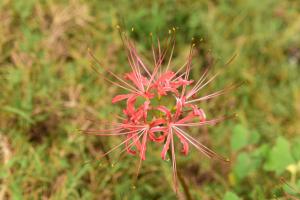Is a Venus Flytrap a Pitcher Plant?
The Venus Flytrap and Pitcher Plant are both carnivorous plants, but they are not the same. In fact, they are quite different from each other. This article will explain the differences between these two fascinating plants.
Venus Flytrap
The Venus Flytrap, also known as Dionaea muscipula, is a carnivorous plant that catches and digests insects and other small prey. The Venus Flytrap has a unique mechanism that allows it to trap its prey. The plant has a pair of modified leaves that come together to form a trap, which is lined with tiny hairs. When an insect walks on the trap, the hairs are triggered, causing the trap to snap shut, trapping the insect inside. The Venus Flytrap then secretes digestive enzymes to break down the insect and absorb the nutrients.
The Venus Flytrap is native to the moist and swampy regions of the southeastern United States. It requires a lot of sunlight and a moist environment to thrive. It is a popular plant among gardeners and plant enthusiasts because of its unique ability to catch prey.
Pitcher Plant
The Pitcher Plant, also known as Sarracenia, is another type of carnivorous plant that catches and digests insects and other small prey. The Pitcher Plant has a unique pitcher-shaped structure that is filled with a fluid that attracts and drowns insects. The plant secretes digestive enzymes into the fluid, which break down the insect and absorb the nutrients.
There are several types of Pitcher Plants, including the North American Pitcher Plant, the Tropical Pitcher Plant, and the Cobra Plant. The North American Pitcher Plant is the most common type and is native to the eastern United States and Canada. It requires a moist and nutrient-poor environment to thrive.
Differences between Venus Flytrap and Pitcher Plant
While the Venus Flytrap and Pitcher Plant are both carnivorous plants that catch and digest insects, there are several differences between the two plants. The most obvious difference is the way in which the plants catch their prey. The Venus Flytrap has a pair of modified leaves that form a trap, while the Pitcher Plant has a pitcher-shaped structure that is filled with fluid.
Another difference is the environment in which the plants thrive. The Venus Flytrap requires a lot of sunlight and a moist environment, while the Pitcher Plant requires a moist and nutrient-poor environment.
Lastly, the Venus Flytrap is a small plant that catches small insects, while the Pitcher Plant is a larger plant that can catch larger insects and even small animals such as frogs.
Conclusion
The Venus Flytrap and Pitcher Plant are two fascinating carnivorous plants that catch and digest insects and other small prey. While they are similar in their carnivorous nature, they have several differences in the way they catch prey and the environment in which they thrive. If you are interested in growing carnivorous plants, both the Venus Flytrap and Pitcher Plant are great options to add to your collection.

 how many times do yo...
how many times do yo... how many planted tre...
how many planted tre... how many pine trees ...
how many pine trees ... how many pecan trees...
how many pecan trees... how many plants comp...
how many plants comp... how many plants can ...
how many plants can ... how many plants and ...
how many plants and ... how many pepper plan...
how many pepper plan...






























